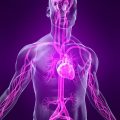Table of Contents
POTS or Postural Tachycardia Syndrome, is defined by excessively high heart rate upon upright posture (standing). Patients of this condition will experience around or more than 30 bpm (beats per minute) increase in their heart rate; or 120 bpm upon standing. This exaggerated increase of heart rate usually happens within the 10 minutes of standing.
Two Basic Categories of POTS
POTS can be categorized into two main categories, the primary and secondary. Doctors believe that there are distinct subtypes within both categories of Postural Tachycardia Syndrome. However, experts are yet to identify, label, and get these subtypes universally accepted.
- Primary POTS – Primary POTS is an idiopathic condition, and is not associated with any underlying medical conditions.
- Secondary POTS – Secondary POTS is the opposite of primary, as it is associated with an underlying disorder or disease.
Regardless of the category or subtype, POTS is NOT contagious. It is a syndrome, and NOT a disease.
Who Develops POTS?
People develop this syndrome for many different reasons. Often times, POTS is developed after being sick from a virus; after getting exposed to great stress (chemotherapy, surgery, trauma) or after giving birth. Research shows some people have this syndrome their entire lives; while many of the cases were seen among teenagers during their rapid growth years; and more than 75% of them can anticipate being asymptomatic by their adulthood years.
Most POTS patients are somewhere between the ages of 15 and 50. Also, research shows women are five times more likely to develop this syndrome than men. The onset of this syndrome is gradual, and the severity and quantity of symptoms may vary from day to day.
Dangers of POTS Symptoms
Though not contagious, symptoms of POTS vary from one patient to another; this is because people develop different types and subtypes of POTS because of different reasons. Despite this complexity, one thing is for sure; POTS symptoms are not something you can take for granted, as they can be both debilitating and life altering.
For instance, because of the nature of the syndrome (excessive increase of heart rate); people with this condition use up more than three times energy when standing than a healthy person. Even when at rest, their body seems like it’s been running; and simple activities such as bathing, housework, etc., can be difficult. Research shows that the quality of life of POTS patients is very similar to those suffering from chronic obstructive pulmonary disease; or even congestive heart failure. As a matter of facts, around 25% of POTS patients are unable to work; and they have to force lifestyle adjustments to cope with their condition for daily living.
POTS Treatments
Because POTS; its symptoms and underlying medical conditions differ from one patient to another treatments are tailor-made for each individual patient. Also, it is worth noting that there is no single treatment for this syndrome, yet. Physicians usually recommend therapies to relieve low blood volume and regular blood circulation.
Doctors may also recommend more attention to adequate fluid intake and adding extra salt to the patient’s diet. Doctors may also prescribe medications such as fludrocortisone for patients on a high salt diet, and low doses of midodrine to help improve blood volume and narrow the patient’s blood vessels.
Of course, balanced diet and exercise help improve orthostatic intolerance.






 I love to write medical education books. My books are written for everyone in an easy to read and understandable style.
I love to write medical education books. My books are written for everyone in an easy to read and understandable style.